The second day in Tokyo, we went to visit the gardens of the imperial palace in the morning. The vibe of "tourism in Japan" is completely different from the trips I took before.
Travelling in Europe, you expect to see majestic buildings and learn about stories of famous men and their battles or their inventions or their creativity.
Travelling in America is more about stunning, untamed nature, alongside some men and battles.
I've only been in for two days in Tokyo, but it already feels so different from other places. No majestic buildings. No untamed nature, of course, we are in the middle of one of the largest urban areas on Earth. But also not much about men and battles. Or outstanding engineering. Or women and their occupations.
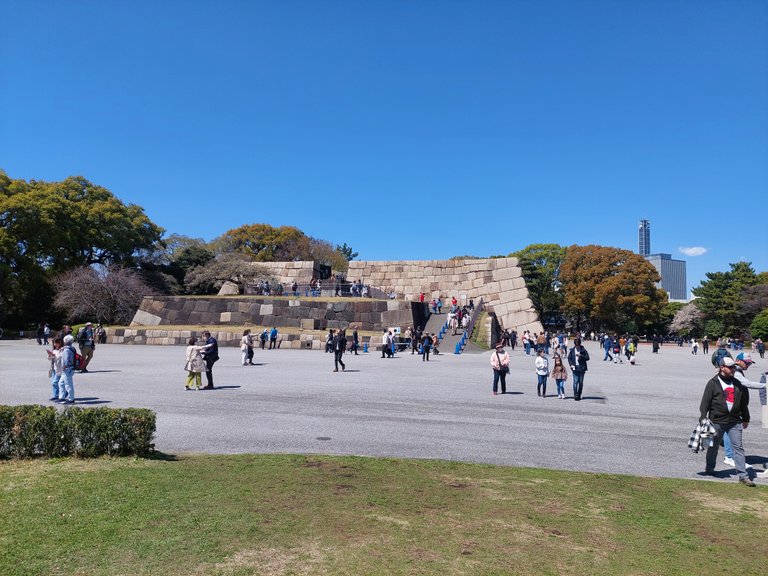
This is basically what's left of the Edo era - the era of the Shoguns that started after the "unification of Japan" by Oda Nobunaga, under the first Shogun, Tokugawa Ieyasu, in the early 16th century. That "tower base", made of large granite blocks, on which a wooden tower 58m tall was built two or three times over because of fires. After the large fire of 1657, the symbol of power that the tower projected was considered unnecessary anymore. There were no credible challengers anymore to the power of the Shogun. There is nothing else left. Everything was made of wood and burned down. There's just a large grass field where the Edo court was located.
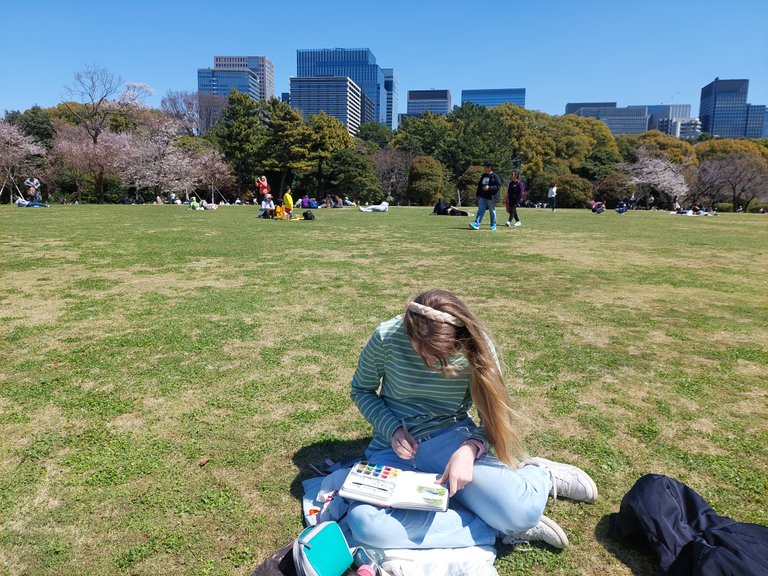
To get there, we stepped out of the train at Tokyo station.
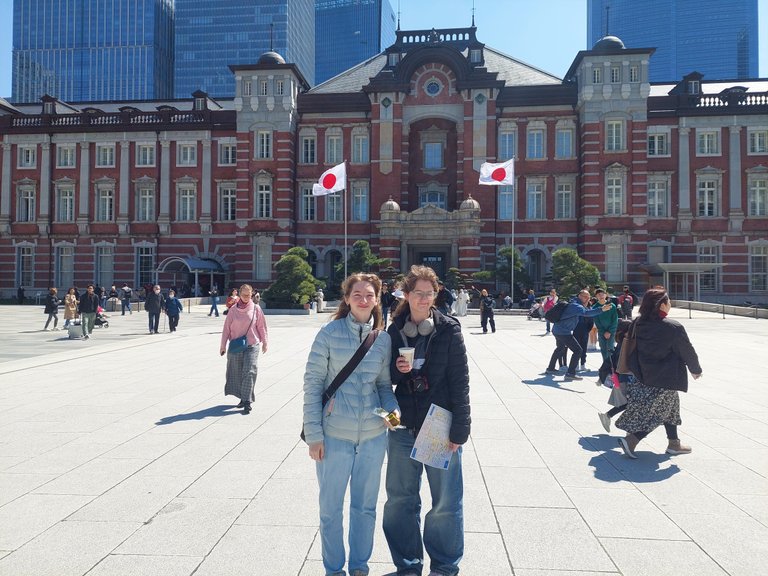
I was surprised to note that there was an impressive stream of Japanese visitors. Entering the gardens, they started taking pictures of the blossoming cherry trees.
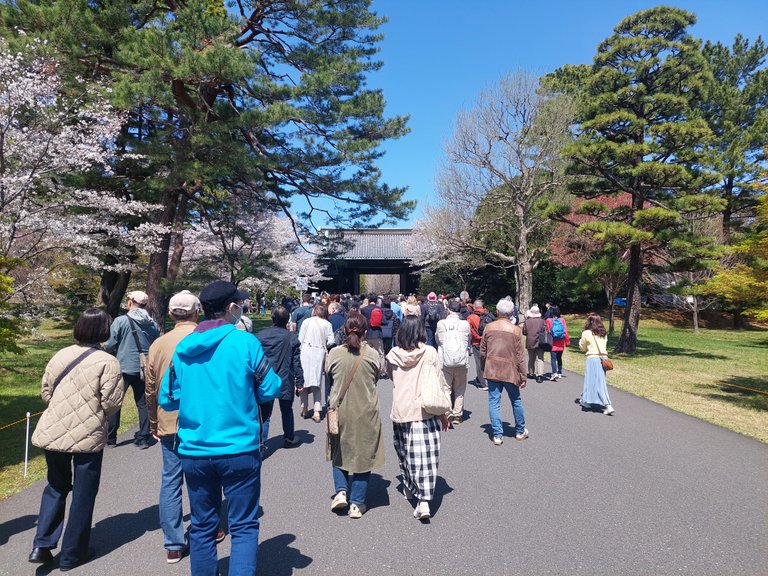
Which is kinda' strange when you think that most of the visitors were relatively old people. You'd imagine that the cherry trees flower the same way year after year ... and they've had the opportunity to take such pictures every year for decades ...
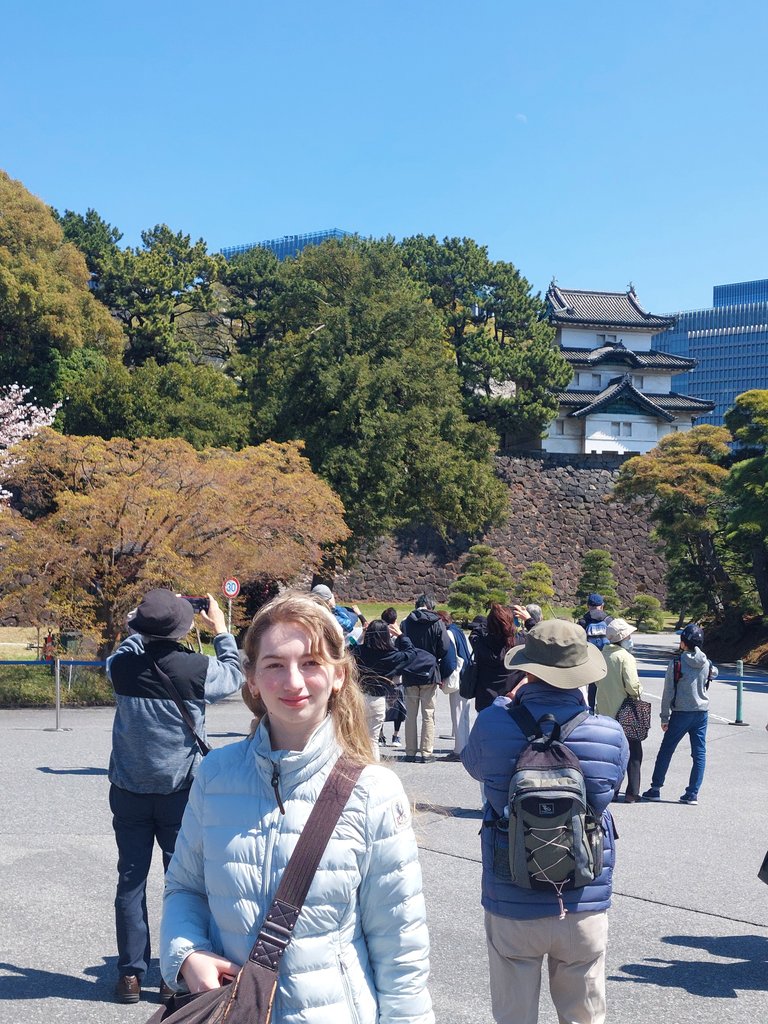
As blossoming cherry trees tend to look similar all over the world, I've tried to take pictures that included an indication of the location of the picture, typically one surviving building (there weren't many).
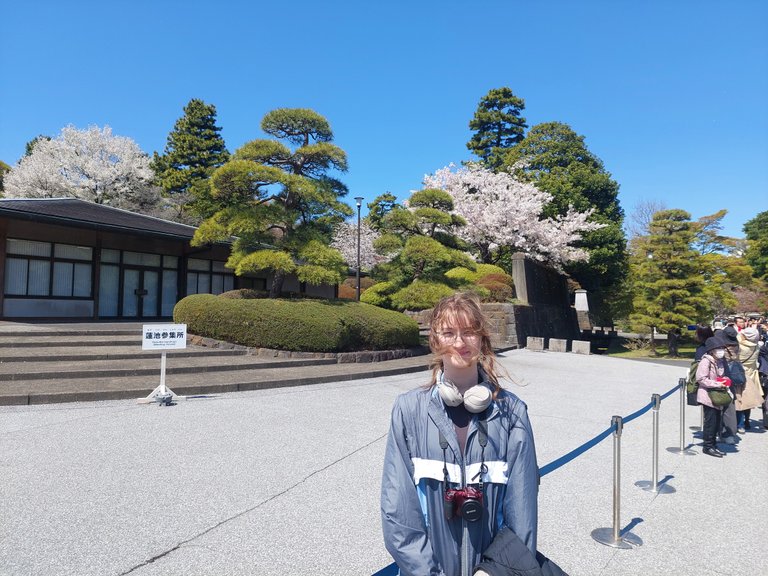
The delicate cherry trees and Japanese pine trees do look beautiful next to the impressive granite walls.
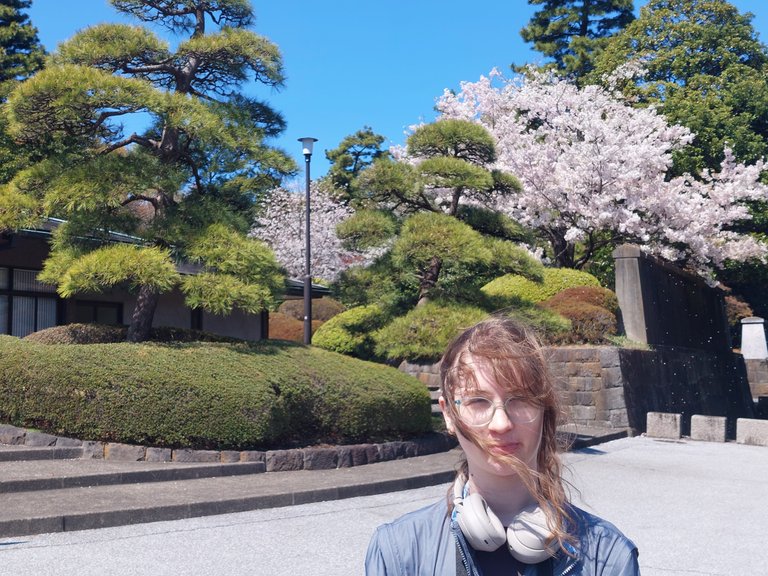
On the way out toward one of the gates, one of the three surviving guard houses that used to host sword-wielding samurais.

Right before leaving the grounds, we visited a small museum, Sannomaru Shozokan, housing art pieces donated in the 20th century by the Imperial family to the Japanese Nation. Perhaps nowhere else is the distinctiveness of the Japanese culture more apparent.
Check the pictures I've taken and try to compare them with what you've have admired in a European museum: portraits, scenes of battle, and people in natural scenes.
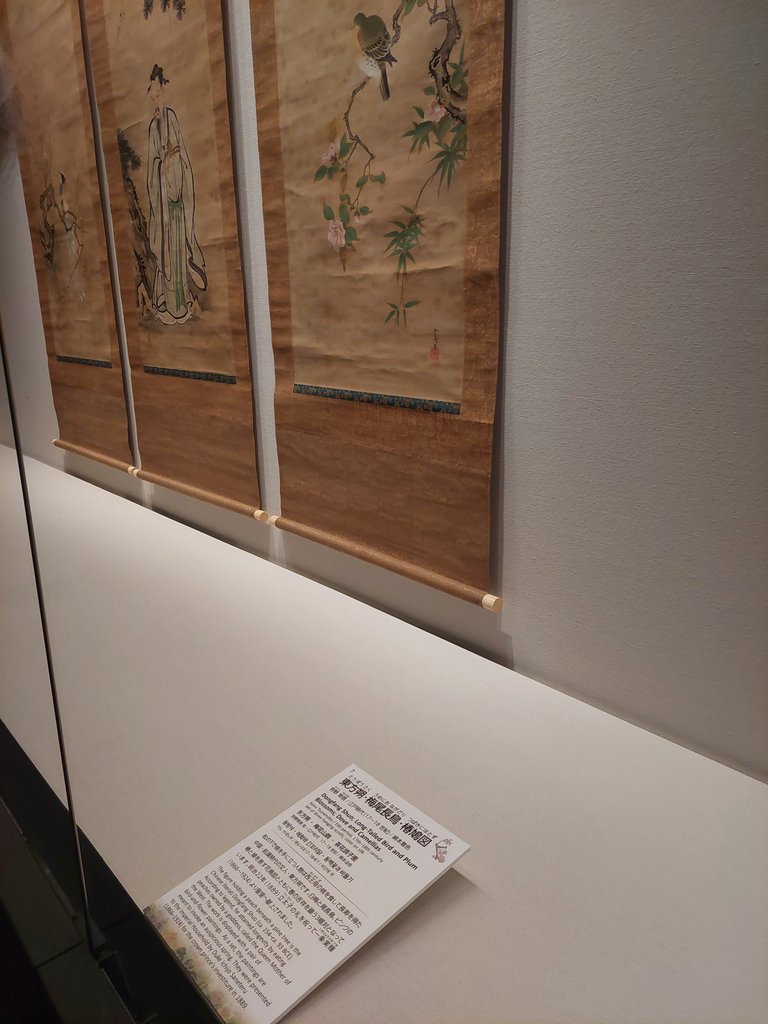
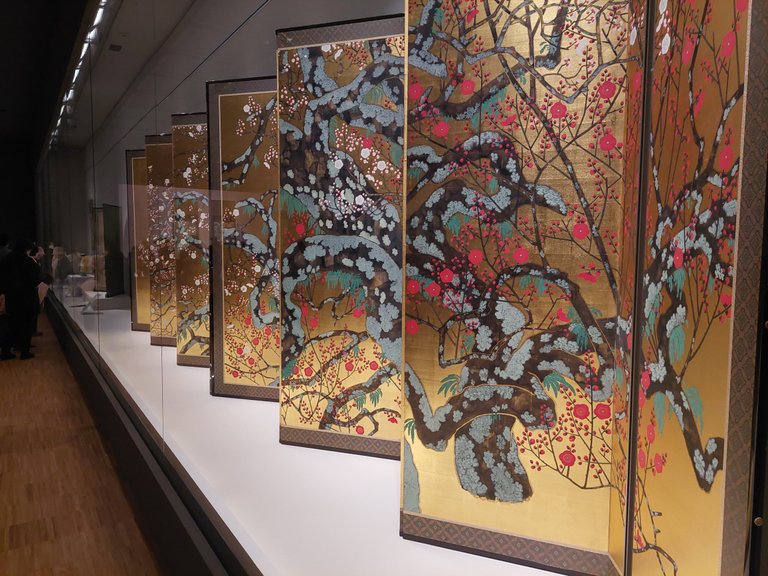
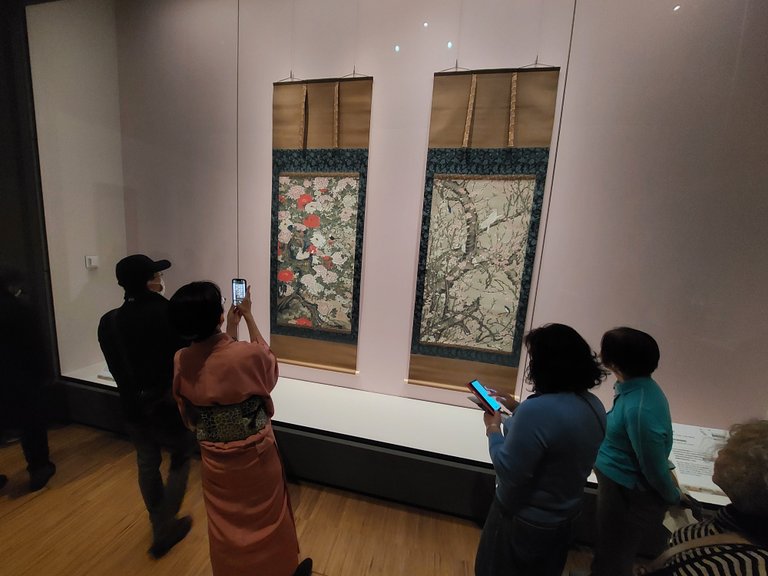
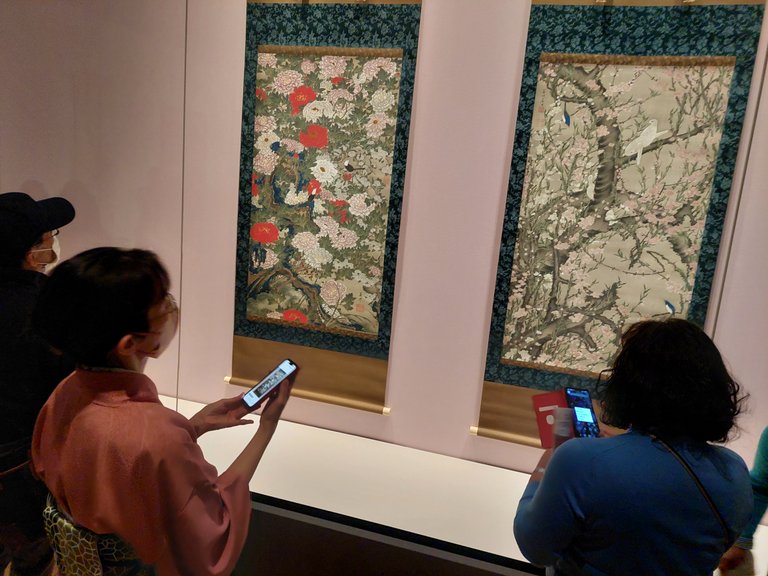

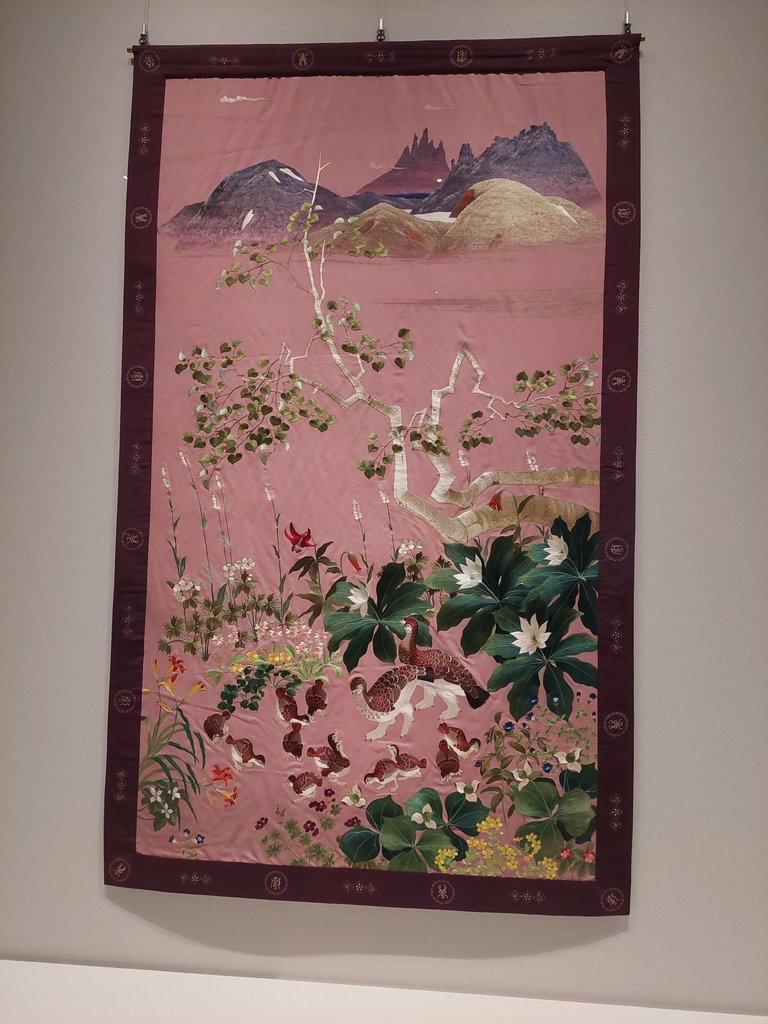
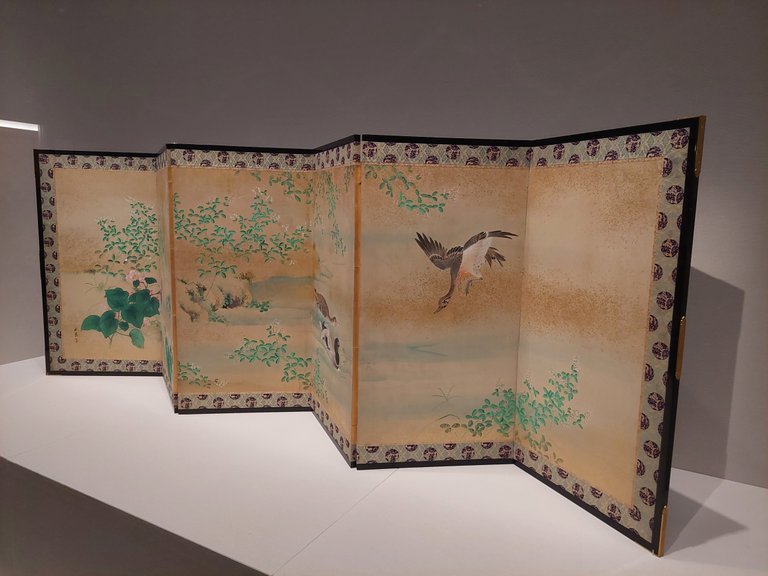
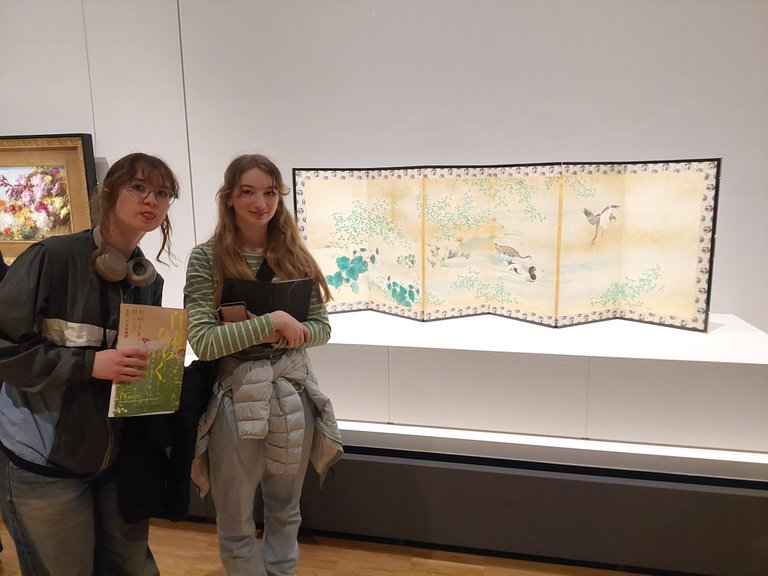
No portraits! Heck, no people at all! I don't know what the Emperor Emeritus nor his wife Empress Kojun look like.
No battles or other human feats like marvels of construction or engineering. Just flowers, trees, birds, nature ...
I visited Turkey last year, and after visiting two museums, I knew the names of all the Ottoman sultans and what they looked like. In Japan, after visiting the Edo Imperial grounds, I have no idea what Tokugawa Ieyasu looked like.
I feel this is a striking manifestation of the deep cultural differences between what I would call "Abrahamic cultures" (to include Christian and Muslim civilisations) on one hand and the Japanese Shinto-ism.
The only human representation in the museum was of a Chinese poet and wise man.
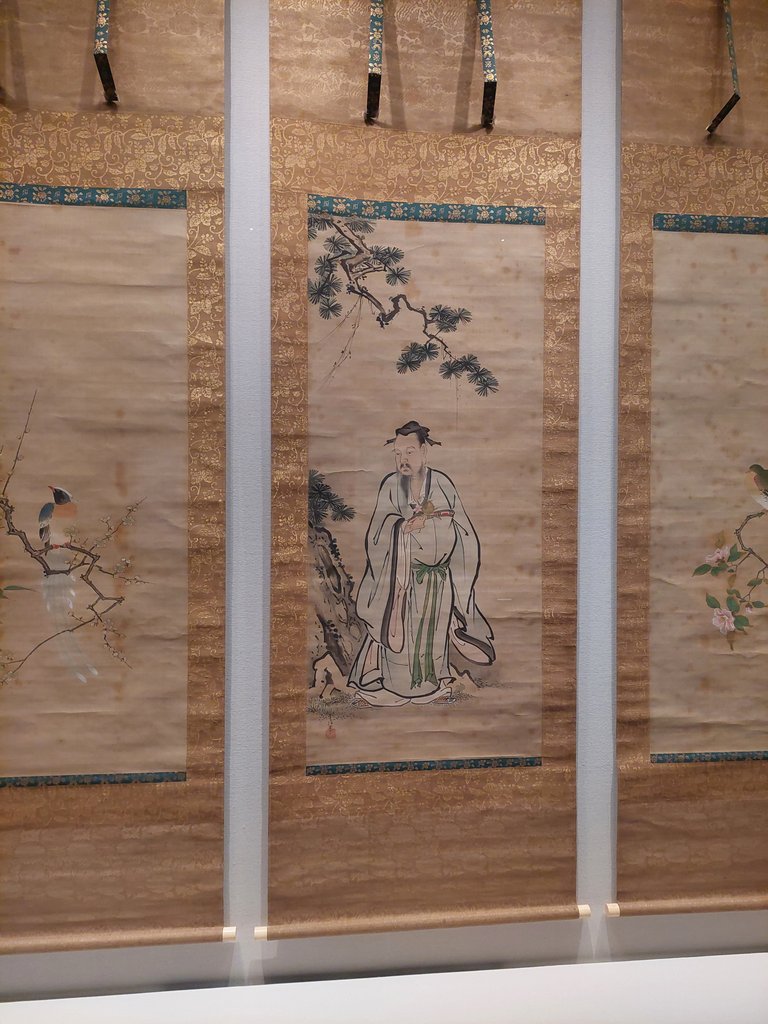
People always look forward to seeing the flowering cherry blossom trees. Gorgeous layout of the different trees; very soothing to the eyes. Interesting Japanese artworks too.
I’ve always seen cherry blossoms in anime and photos, but reading your take made it feel more real and deep
That place is nice, it makes me want to visit it.
Truly a culture shock, but somehow not surprising?
I've only pointed out things that genuinely surprised me:
Yes, I guess being confronted with it, coming as we do from such different cultures, castles and industrial dereliction everywhere, it would be surprising.
The cherry blossom doesn't surprise me because of the symbolic place it has, and people make trips to see cherry blossom, like we might go somewhere to see autumn colours, or the northern lights (perhaps even more so because of its symbolism).
Hope you enjoy your visit, I love hearing these stories.
The palace garden is very beautiful, there are so many people visiting to enjoy the beauty of the place, it is truly extraordinary, very amazing ❤️🙏
Hiya, @ybanezkim26 here, just swinging by to let you know that this post made it into our Honorable Mentions in Travel Digest #2521.
Your post has been manually curated by the @worldmappin team. If you like what we're doing, please drop by to check out all the rest of today's great posts and consider supporting other authors like yourself and us so we can keep the project going!
Become part of our travel community:
You can check out this post and your own profile on the map. Be part of the Worldmappin Community and join our Discord Channel to get in touch with other travelers, ask questions or just be updated on our latest features.
You received an upvote ecency
Hello